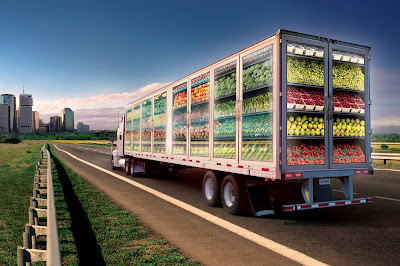In today's fast-paced world, the need for convenient and
easily accessible food is increasing. However, food safety is a top priority.
To ensure that food remains fresh and safe for consumption, it is important to
have proper packaging. One type of packaging that is becoming increasingly
popular is chilled packaging. This blog post will discuss chilled packaging and
its importance in the food industry.
What is Chilled Packaging?
Chilled packaging is a type of packaging used for perishable
goods that require specific temperature control to maintain freshness and
quality. Chilled packaging is designed to keep food at a specific temperature
range, typically between 0°C to 8°C. The packaging is made up of different
materials, including insulating materials such as polystyrene, polyurethane, or
vacuum-sealed plastics, and temperature-controlling elements such as gel packs
or dry ice.
Importance of Chilled Packaging
Chilled packaging is crucial in the food industry,
particularly for the transportation of perishable goods, such as fresh produce,
meat, fish, dairy, and baked goods. It helps to prevent spoilage and bacterial
growth and maintains the nutritional value of the food. Chilled packaging also
extends the shelf life of products, which reduces waste and helps to keep food
costs down.
Types of Chilled Packaging
Different types of chilled packaging are available,
depending on the product type and the required temperature range. Some examples
include:
·
Polystyrene boxes:
These are lightweight and have good insulation properties,
making them ideal for the short-term transport of chilled products.
·
Vacuum-sealed plastics:
These are airtight and have good insulation properties,
making them suitable for transporting chilled or frozen products for longer
periods.
·
Gel packs or cooling packs:
A gel or cooling pack is
commonly used in conjunction with other types of packaging to maintain a
consistent temperature range for perishable goods.
Benefits of Chilled Packaging
There are several benefits to using chilled packaging,
including:
·
Improved
food safety: Chilled packaging helps to prevent spoilage and bacterial
growth, which reduces the risk of foodborne illnesses.
·
Extended
shelf life: Chilled packaging extends the shelf life of products, which
reduces waste and helps to keep food costs down.
·
Environmental
sustainability: Chilled packaging can be made from recycled or
biodegradable materials, which helps to reduce waste and environmental impact.
·
Convenience:
Chilled packaging makes it easier to transport perishable goods, which is
essential for the food industry.
Conclusion
In conclusion, chilled
packaging is an essential aspect of the food industry. It helps to
maintain the quality and freshness of perishable goods, extends shelf life, and
reduces waste. Furthermore, different types of chilled packaging are available,
depending on the product and the required temperature range. Therefore, chilled
packaging is an important consideration for anyone involved in transporting or
storing perishable goods.

Comments
Post a Comment